One important storage principle that many people forget is that RAID is not a backup solution, it is a method of achieving performance targets, redundancy, and up-time. Users backup their PCs to their local servers, but often forget to backup server data off-site. This is especially concerning for any data using the local server as primary storage. One option employed by users is to backup server data to the cloud which provides a redundant, off-site backup solution. Cloudberry Labs’ CloudBerry Online Backup for Small Business Server 2011 Essentials (code name Aurora) is a program that automates cloud backup and also automates server backup to a network share.CloudBerry Online Backup for Small Business Server 2011 Essentials (code name Aurora) supports Amazon S3 storage, Microsoft Azure Blob storage, Nirvanix Storage Delivery Network, and Dunkel Storage (Germany). This gives users a few options when it comes to cloud storage vendors. Of course, I am never content with doing easy things like using software for it’s most often used purpose, so I decided to skip the cloud back-up for now, and see if I could get my SBS 2011 Essentials Release Candidate Hyper-V virtual machine to backup to my test WHS (v1). Some people are probably wondering why I would want to backup to a machine that is 2m away versus to the cloud, and the simple answer is that I have been playing with 10-gigabit interconnects, including multi-port adapters.
CloudBerry Online Backup Features:
- Seamlessly integrates with SBS 2011 Essentials control panel
- Scheduling capabilities
- Data encryption
- Data retention schedule
- Secure online storage
- Data versioning
- Differential backup
- The ability to restore to a particular date
- Backup verification
- Backup Window
- Automatically delete files from online storage if the were deleted locally
- Backup to Multiple S3 accounts/buckets
- Smart Delete – an option to keep locally deleted files on backup storage for a certain time
- Simple Mode – maintain exactly the same data structure on S3 as you have on your local computer.
- Reduced Redundancy Storage support
Installation
Installation was super simple. The first steps involved going to the CloudberryLabs CloudBerry Online Backup for SBS 2011 Essentials download page, downloading the file, and installing the package. A quick note, if you use the on-server IE browser to do this, you will have to add CloudberryLab.com to the trusted sites to be able to download the plug-in.
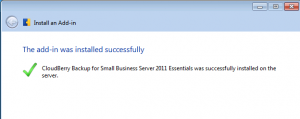
After installation completes, fire up the management console and you will see that the CloudBerry application is installed.
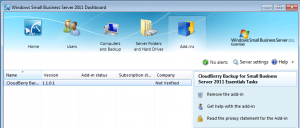
One will also see a top-level menu for the CloudBerry plug-in. Clicking on that for the first time will ask for registration details. Hint: upon initial installation, one probably wants to start a 15 day trial until their new server is sorted.
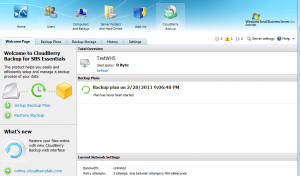
From here one can schedule backups using one of many services. Since just about every other site that has reviewed the CloudBerry application has used Amazon S3 or another cloud provider, I of course decided to use a network location on the test WHS.
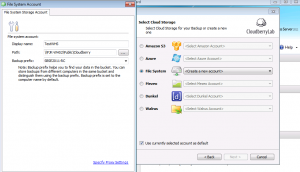
After one selects the network location one can schedule backups using the Administrator account for the CloudBerry service.
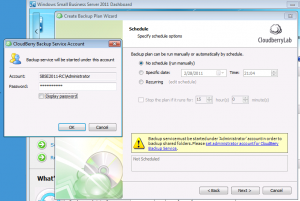
After scheduling backups, one can also setup e-mail alerts upon failure. Generally, one should do this because if the server is not backing up, one wants to know about it.
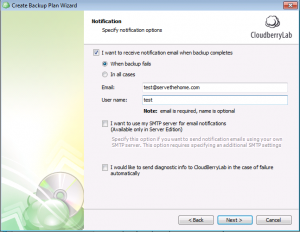
Now that everything is backed up, I always advise people that they should look into restoring data from backups before one needs to restore real-time after a failure. This is a simple process that involves clicking the “Restore Backup” link pictured above and following the wizard.
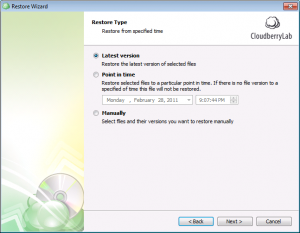
CloudBerry stores incremental backups so it is fairly easy to both restore from the last backup as well as restore from a point a few days prior.
Conclusion
With 10 GigE, doing server to server backup worked fairly well and the cloud storage also worked when I tried. My advice would be that for important documents, the cloud makes sense. For large media files, local backup makes a lot of sense because the cost per TB stored is significantly lower locally. The caveat, of course, is that local backups should be treated as at least somewhat likely to be lost if the main server is lost. CloudBerry Online Backup for Small Business Server 2011 Essentials costs $69.99 with the Windows Home Server 2011 version being quite a bit less expensive.




Seems to me that a combination of both is sensible. I use the free version of Syncplicity, which automatically uploads files in my pre-defined folder, a flash drive which I carry around with me and two HDD, one on the laptop, the other external.